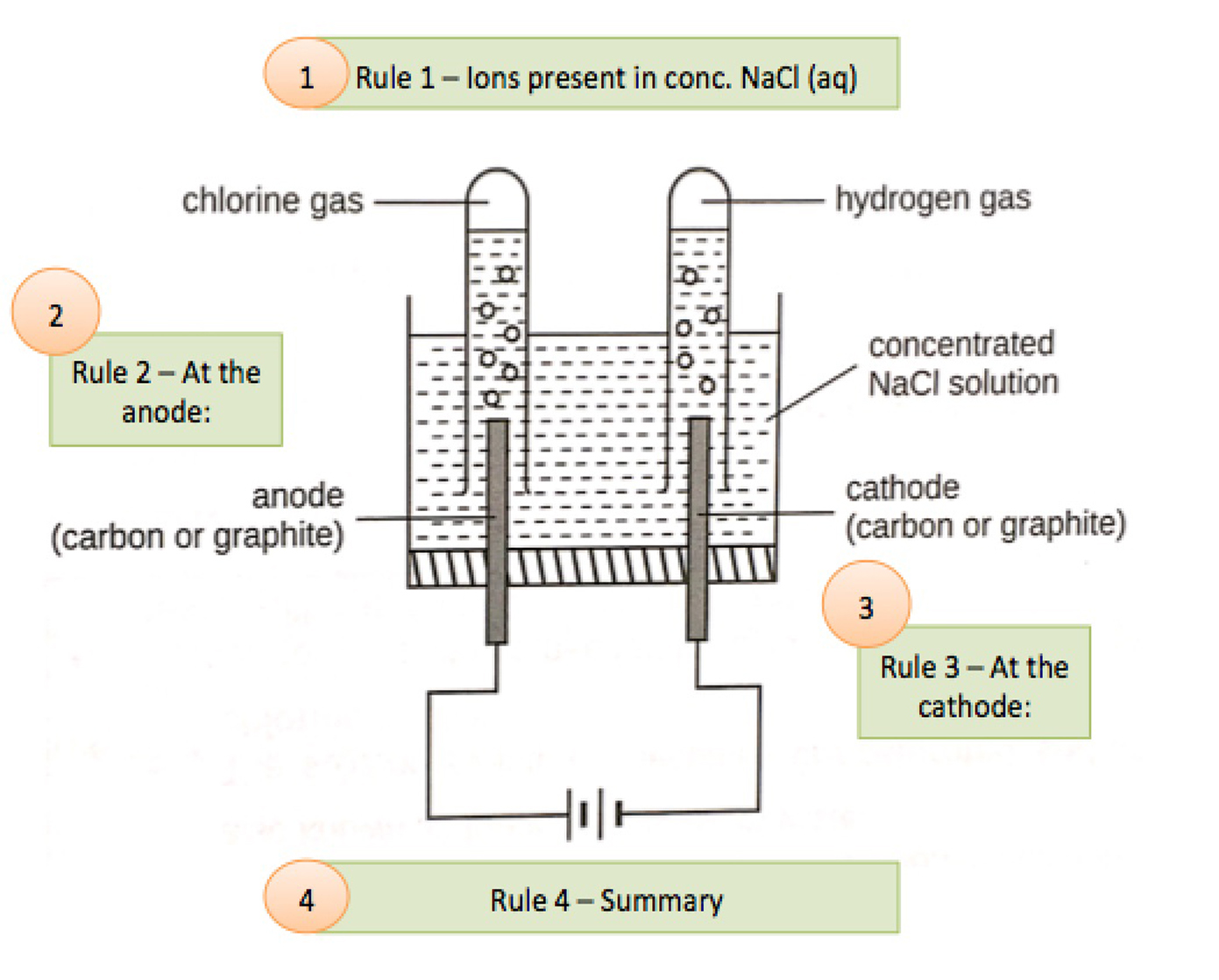The ions present are: Ions from sodium chloride - Na+(aq) and Cl-(aq) Ions from water - H+(aq) and OH-(aq)

At the anode, OH- and Cl- ions are attracted to the carbon anode. Cl- ions are selectively discharged as chlorine gas because there is a higher concentration of Cl- ions as compared to OH- ions. Ionic half equation: 2 Cl-(aq) --> Cl2O(g) + 2 e- The OH- ions remain in solution.